Coral Triangle communities find solutions as underwater world faces deep climate challenges
Asia’s Great Climate Frontiers: In parts of the Coral Triangle, a harmony between fishing and marine protection has been achieved. But the future is far from certain.
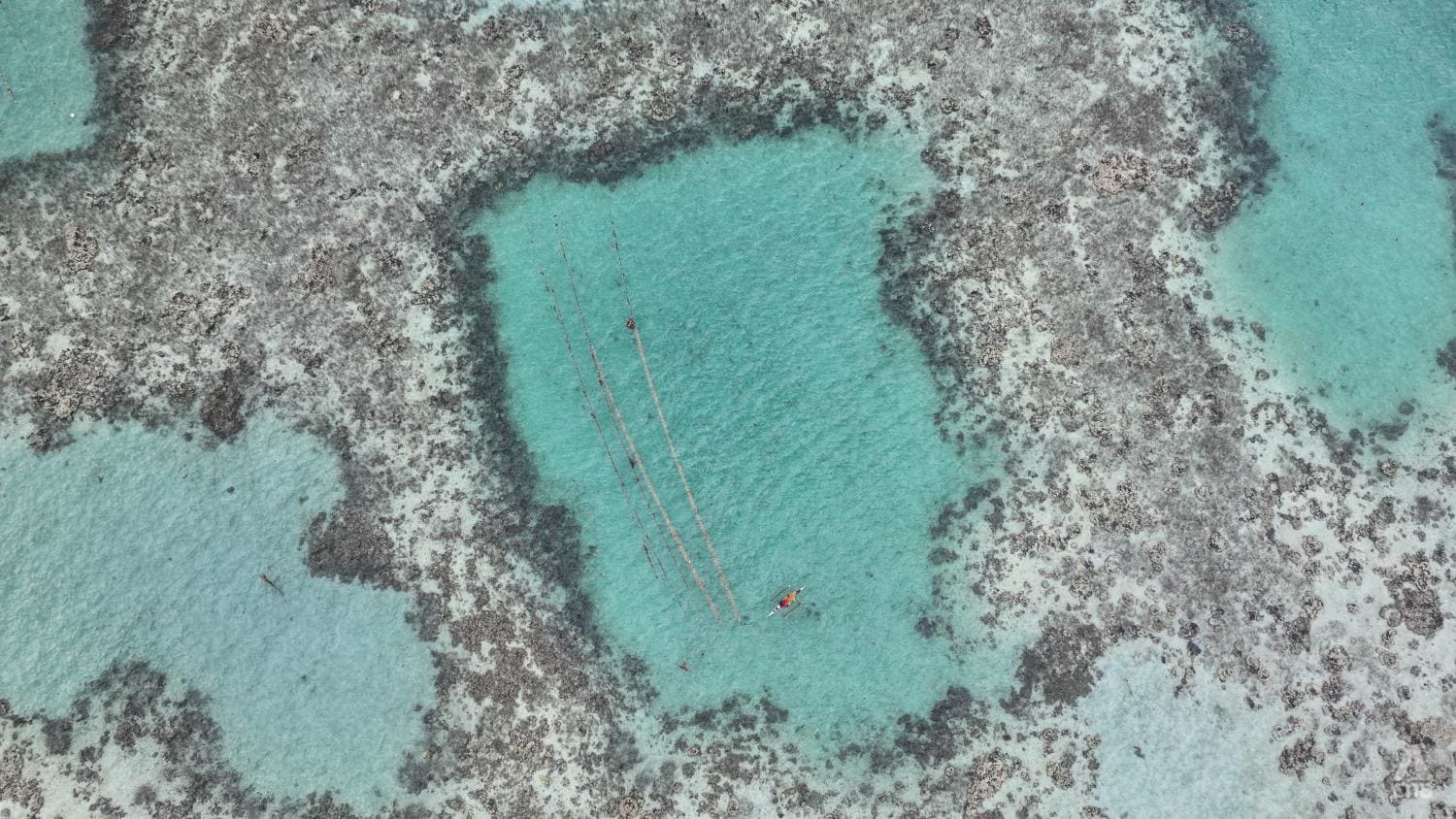
The Coral Triangle is one of the most diverse ecosystems of its kind in the world. (Photo: CNA/Jack Board)
APO ISLAND, Philippines: Around the small volcanic island, the sea is heavy and the sky is dark. This is the Amihan season in the Philippines, where days are defined by the onset of the northeast monsoon, cooler temperatures and trade winds.
Below the surface of the water nearby, there is turbulence too. Soft corals undulate in the strong current and small colourful fish seek refuge as waves break on the reef.
Other underwater visitors to Apo Island off the coast of Negros do not seem to mind the conditions though.
Green sea turtles have found a safe haven just metres from the shoreline of this fishing community. Unafraid of snorkelling tourists, the turtles graze in the murky shallows on a rich supply of seagrass. Locals estimate there could be up to 250 turtles that frequent the island’s waters, a rare phenomenon that has boosted the fledgling economy here and injected further momentum to protect marine life.
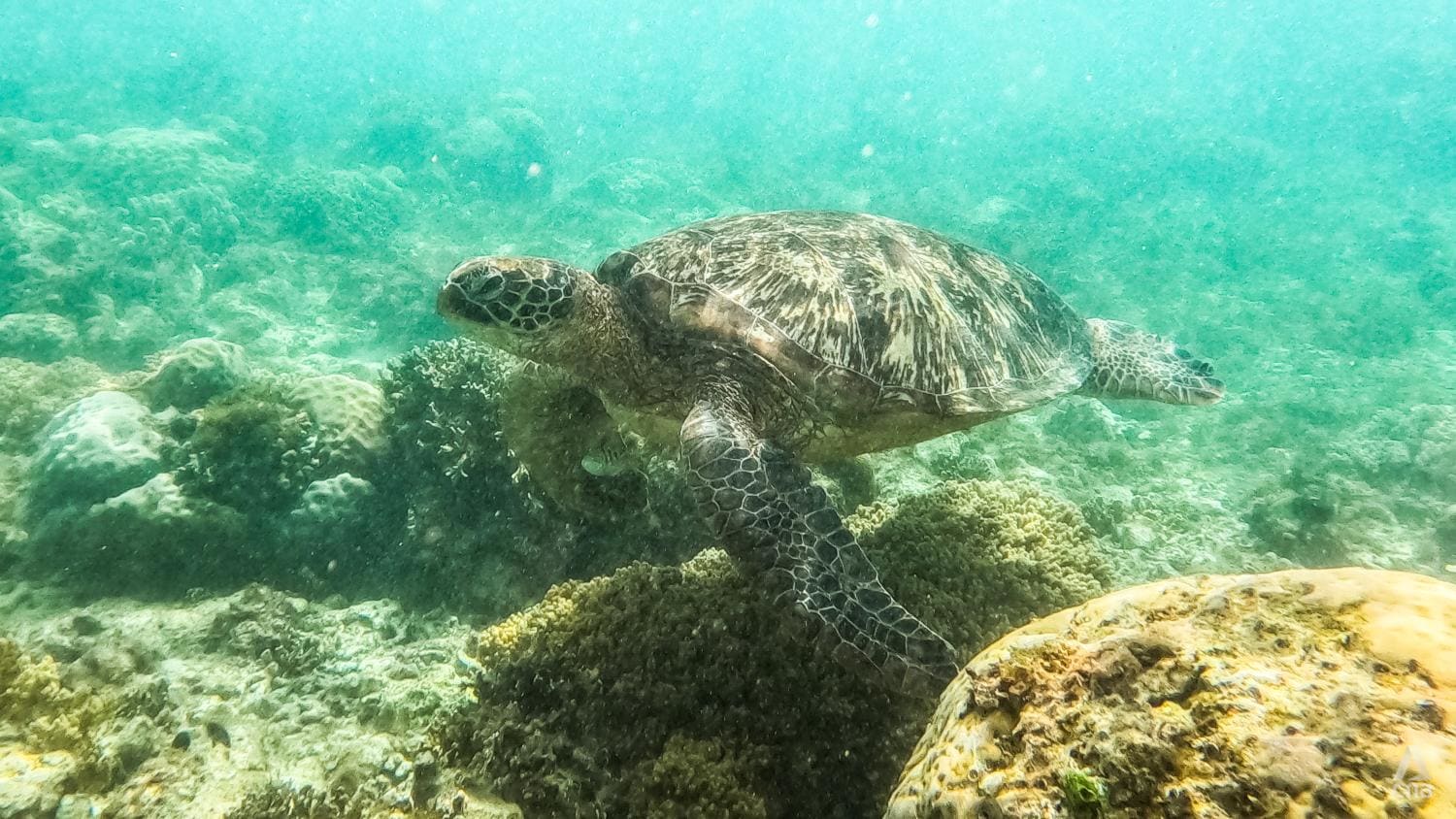
Tourists flock now to Apo to see the majestic creatures, as well as the colourful coral reefs that have been allowed to blossom.
A hard-fought harmony has been found here. But the situation on Apo was not always so. And how the long-term future looks hangs in the balance still.
On the other side of the island, a less hopeful scene lies - symbolic of the challenges that exist around coral-dependent islands and economies in the Philippines.
Not a soul can be spotted in Apo Island’s marine protected area (MPA), a 74-ha strip of coral that has special protections from human activity. Coral boulders lay strewn along the shoreline. The reef here has fallen silent.
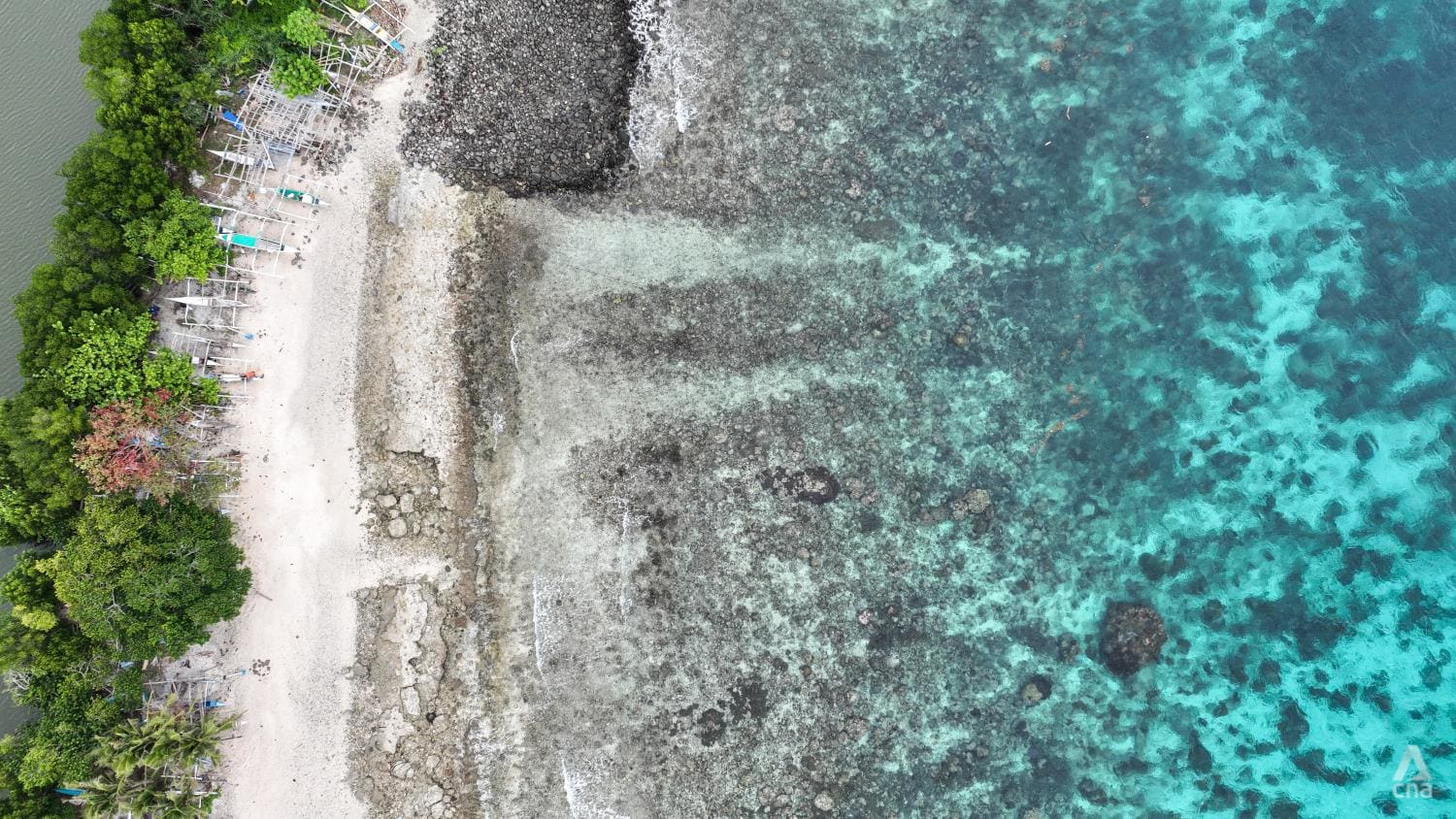
For more than a decade, the MPA has been closed to all after it was decimated by Typhoon Sendong in 2011 and a year later by Typhoon Pablo. The impacts on corals not accustomed to violent storms were catastrophic.
“It's as if somebody bulldozed the whole area. And then the second typhoon, it's as if somebody went down and then smashed whatever was left,” said Rene Abesamis, an associate professor at UP Marine Science Institute and a leading expert on marine protected areas.
“So, it was total obliteration of corals inside the sanctuary. Just imagine 30 years of protection gone in a few hours, because of two typhoons that happened one year apart.”
Some locals doubt it will ever rebound, amid rising threats from climate change in the region.
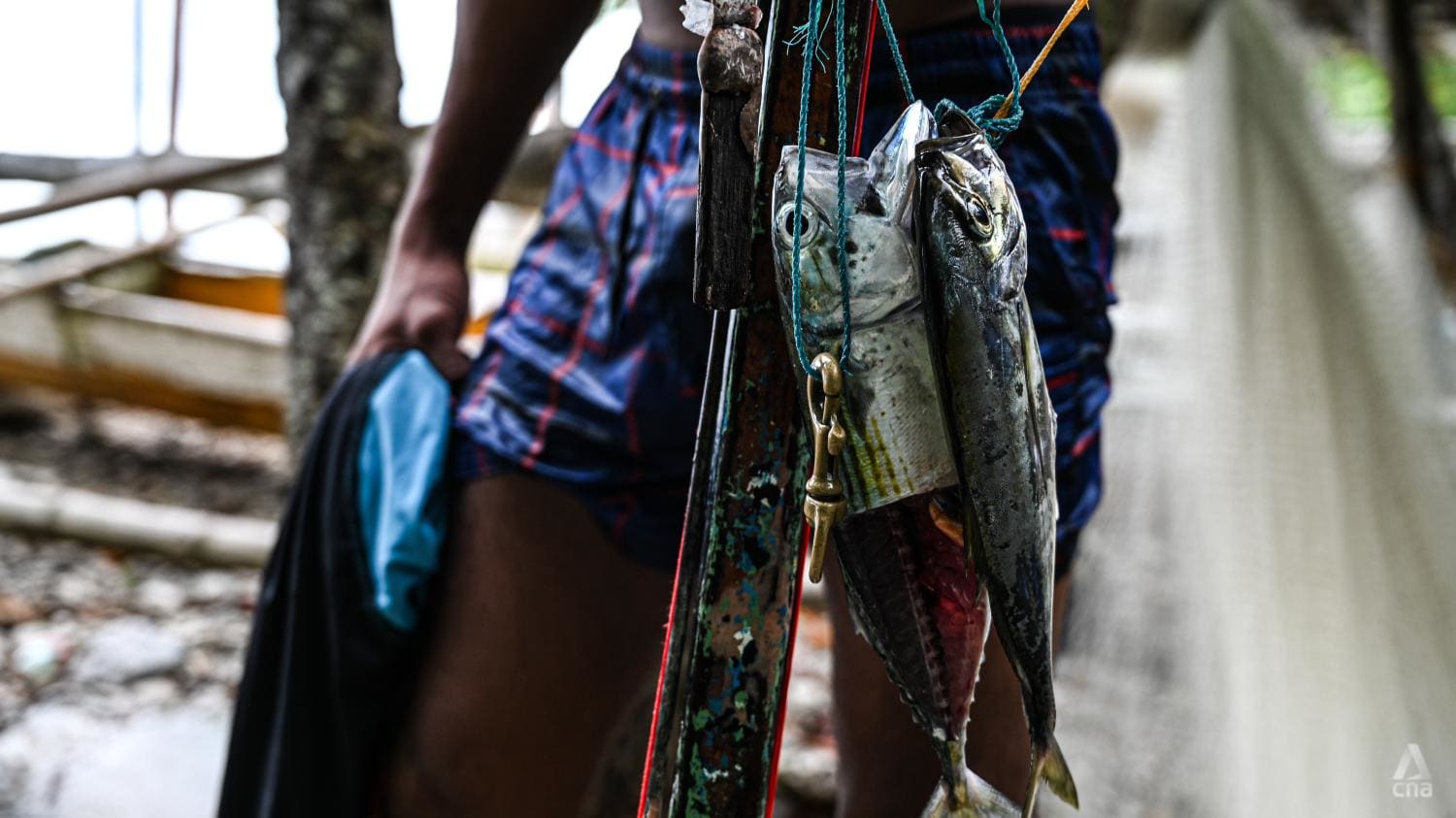
REEFS AT RISK
Apo Island lies within the Coral Triangle, a vast ecosystem that stretches across the marine territories of the Philippines, Indonesia, Malaysia, Timor Leste, Papua New Guinea and the Solomon Islands.
The Coral Triangle is home to more than 500 varieties of coral and is the most biodiverse place in the world for fish species. It is complex, delicate and ancient.
It also helps to support, feed and protect about 120 million people who live within its boundaries and is home to critical mangrove forests.
The whole zone - just like coral reef systems all across the globe - is highly vulnerable to climate change impacts. Global sea temperature warming, ocean acidification and rising sea levels are compounding the stress factors.
Typhoons in the Philippines are becoming more intense and unpredictable. While damaging weather patterns are highly complex and multi-faceted, research has shown that climate-related factors are contributing to the more frequent emergence of monster storm systems.

About a quarter of the world’s typhoons already hit the Philippines, and while that number is not expected to rise in the years to come, because of climate change, they are expected to hit harder and move along paths that are difficult to predict and prepare for.
Other human-caused impacts like overfishing, destructive fishing, unregulated tourism and marine pollution are factors contributing to the risks faced by the region.
Reef loss and damage would have major environmental and economic impacts.
The Intergovernmental Panel on Climate Change (IPCC) has forecasted that a 2 degrees Celsius rise in ocean temperatures would eliminate most reef systems.

Already, sea temperatures surrounding the coastal areas of the Coral Triangle are rising approximately 0.1 degrees Celsius every year and could be 1.4 degrees Celsius warmer by the end of the century.
An El Niño weather pattern is forecast for later this year, which is expected to bring warmer water conditions that can result in marine heatwaves and worsen bleaching events.
It has authorities from national governments to local barangays - administrative wards - bracing for worse to come and looking to strengthen their climate defences.

“OUR FARM IS THE SEA”
The designation of a conservation area around Apo Island was a landmark moment for marine protection when it was formalised in 1986. It was the second of its kind in the entire country.
At that time, the concept was novel and unpopular with communities that leaned heavily on the surrounding sea and reefs for food and income.
But this reliance was taking a toll. Catches were dwindling as fish resources became overexploited and dynamite and cyanide deployed by fisherfolk took a toll on the health of the reef.
“In the old days, nobody cared about what happened after you fish, until people got aware that what they were doing was destructive to the fish,” said Mario Pascobello, the Barangay captain of Apo Island.
“People like us, we thought that what we were doing was just normal. And we just realised a bit later that what we were doing was wrong. I was involved specifically in dynamite fishing,” he said.
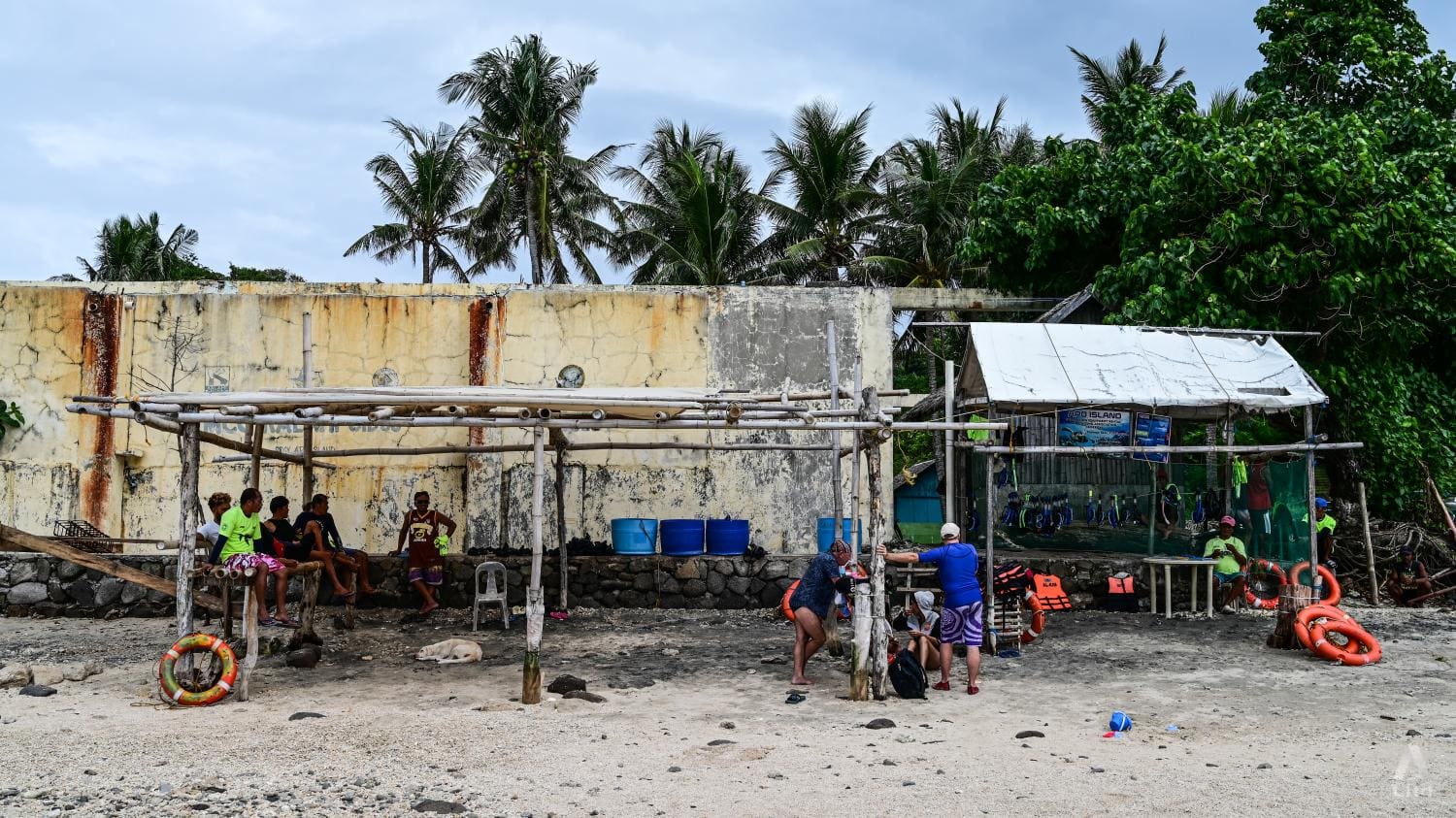
Led by marine biologist Angel Alcala, the MPA was established with the community’s ownership and involvement at its core. Rules were created by locals themselves to ensure fisherfolk avoided the designated area, allowing the reef to grow stronger and fish spawning to expand.
That work has been largely successful, and the Apo Island MPA has become a blueprint for communities around the Philippines and has been replicated some 1,600 times across the country and even internationally in Indonesia.
Pascobello transitioned from being one of the local culprits to a champion of the protection initiative.
“Slowly, slowly, it spread across the country. I'm happy to share what we did here. And it's normally working well and I can prove, and Apo Island itself is proof, that community-based programmes are very effective,” he said.
“I don't say that I'm proud. Because I think it is a responsibility. As a fisherman, you have to protect your farm. And our farm is the sea.”
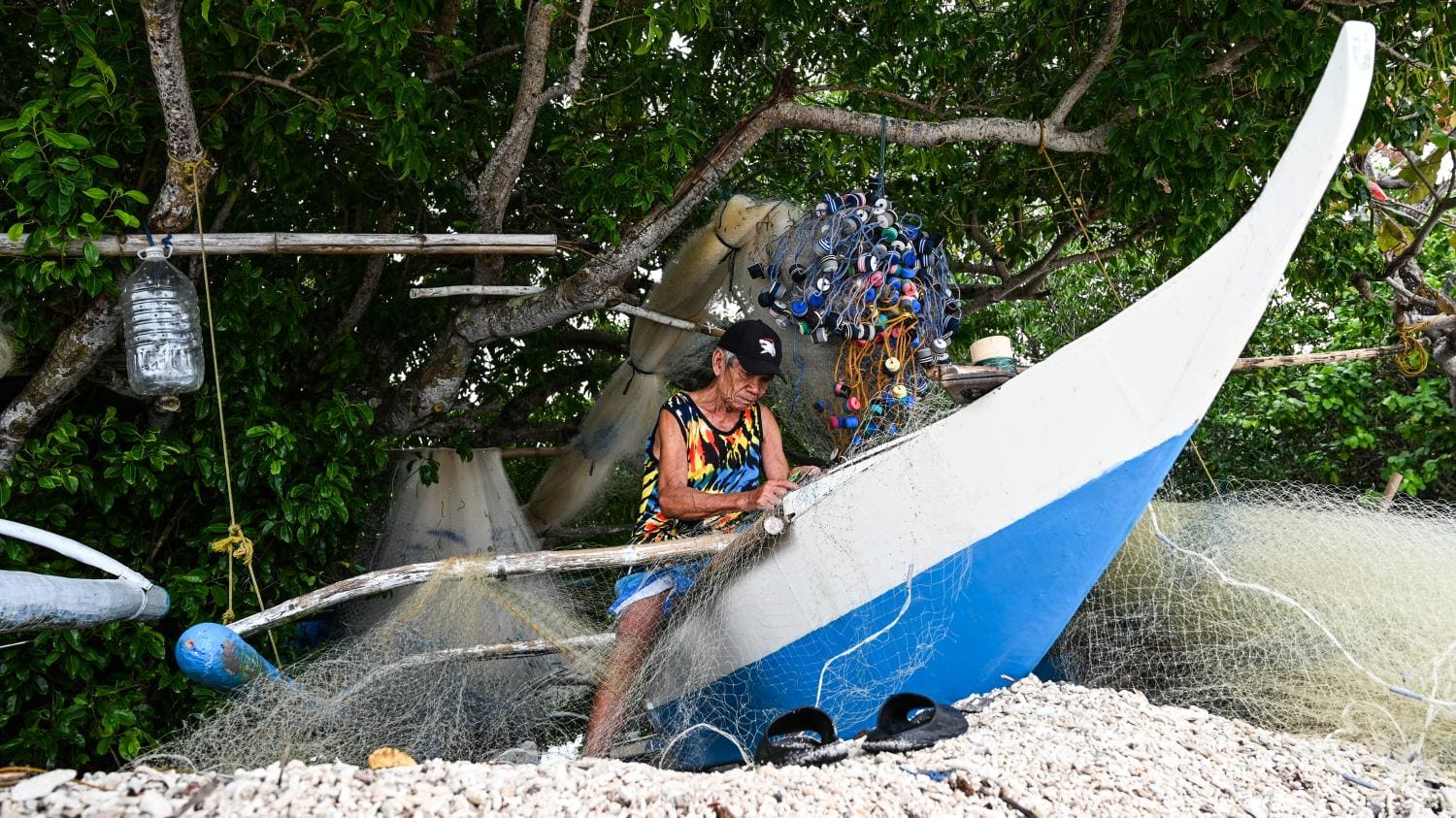
Recovery of this reef after compounding disasters will be on the “decadal scale”, according to Abesamis of the marine science institute. The community, and others like it, need to remain patient as a result and wait for benefits to return.
Their 40 years of work hangs in the balance by a crisis they did not cause.
“Now, the question is, will the recovery be fast enough so that it can survive? Or will it be lucky enough not to get a major disturbance event caused by climate change, like coral bleaching or typhoons,” he said.
Despite the current shortcomings of the MPA, the spirit of those efforts has had unintended benefits: the arrival of turtles and with them, tourism.
“Tourism actually is not part of the main objective of the project,” Pascobello the barangay captain explained. “The objective of this marine sanctuary project is to regenerate the fisheries to give more fish catches to the fishermen. That's it.
“But tourism just comes as a secondary thing here. And it now has become the primary livelihoods of the people,” he said.

Today, nearly all of the island’s residents benefit from tourism. Fishermen take turns acting as snorkel guides for visitors. The women benefit from operating restaurants and homestays, while young people aspire to become tourism operators.
Days of catching and killing turtles, or blowing up reefs, are over.
“The turtles are no longer seen as food but as friends,” said Rimel Tabañera, a young eco-guide on Apo.
“The relationship between the locals and the turtles is there. The turtles are no longer afraid because they are no longer eaten, they are no longer being captured. Instead, visitors who harm the turtles get reprimanded by the locals because they take the protection of the turtles seriously now. And that is lovely.”

NEW FRONTIERS
Dante Jabelo Jr. never even dreamt of learning how to scuba dive. He and his community understand the sea intimately, but not from down in the depths.
Seaweed farmers and fishermen like him on small, remote islands typically do not get the chance, given the costs and skills required.
“We never thought that fishermen like myself can achieve this kind of training, which we assumed is only for those who have money. We would rather spend money on food,” he said.
With the support of the Sulubaai Environmental Foundation, Jabelo now has the ability to suit up and explore underwater. But when he dives, it is not for leisure.
“When scuba diving, we get to see the beautiful undersea creatures. We can check the condition of the corals and see why there are fewer fish. We can find out the reasons for the current state of the sea,” he said. “They helped and taught us so that when the time comes, we can watch over and protect the sanctuary.”
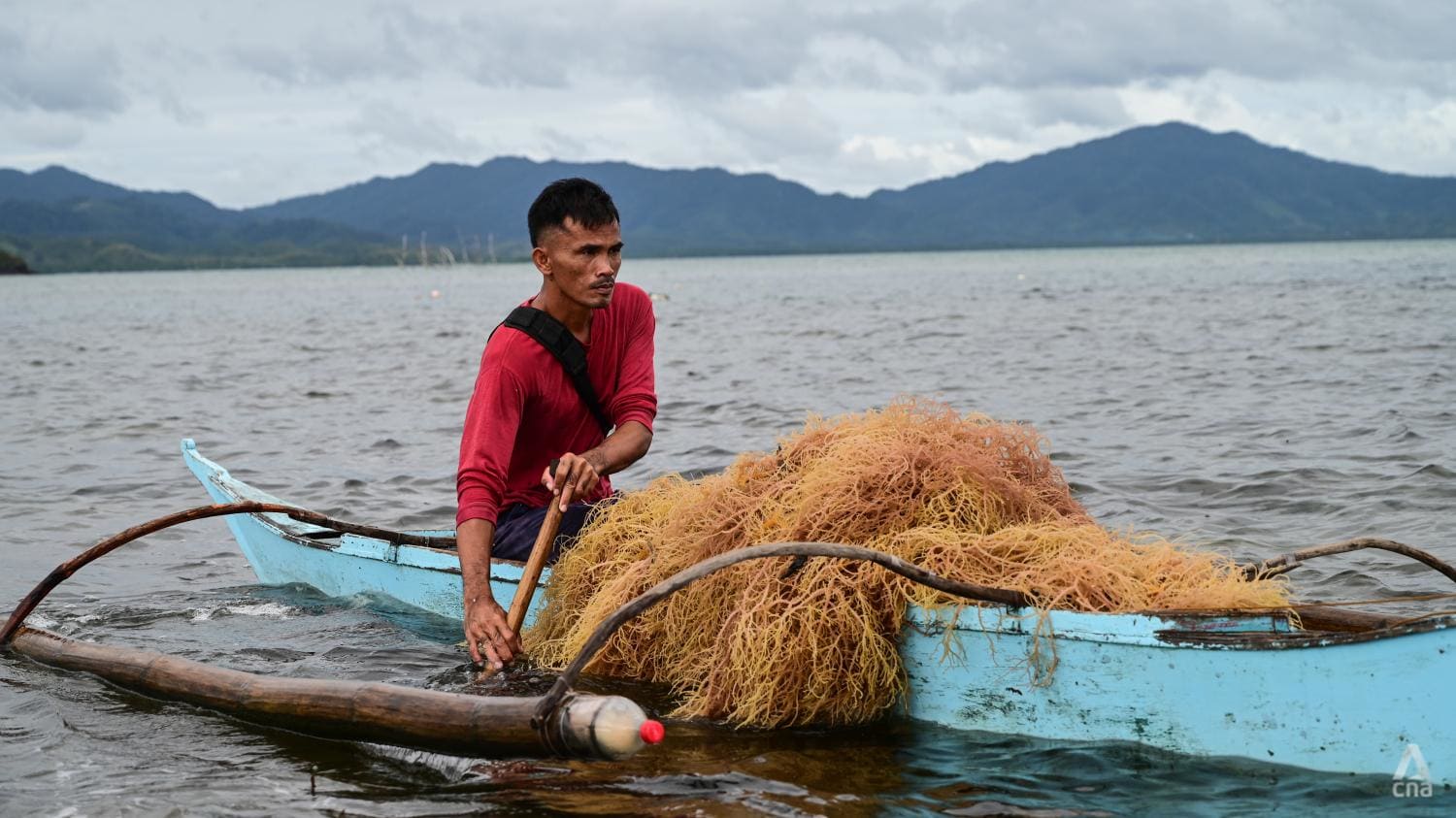
Jabelo is a rising voice in his small community - Depla in Palawan - pushing for an MPA to be established around his barangay’s waters.
Just like many surrounding communities in Palawan, the coral reefs and fishing grounds are struggling from a combination of human activities and climate change. The archipelagic province historically was sheltered from the country’s powerful typhoons but now often finds itself on the destruction path.
“A lot of things have changed. Before, we were able to catch fish even on the outskirts of the ocean. We only bring back and sell high-quality fish. Now, we have no choice but to bring home all of our catch even if it's not good just so we can have something to eat.
“The corals in this area have already been destroyed. They said it would take years before we could bring back the old state of the sea. The corals all look dead. We can't help but think that destructive activities like illegal fishing are the cause of the thinning population of fish in this area.
“We think that having a sanctuary will help bring back the time when we would have an abundant catch. There are many marine species, beautiful ones, that are long gone,” he said.
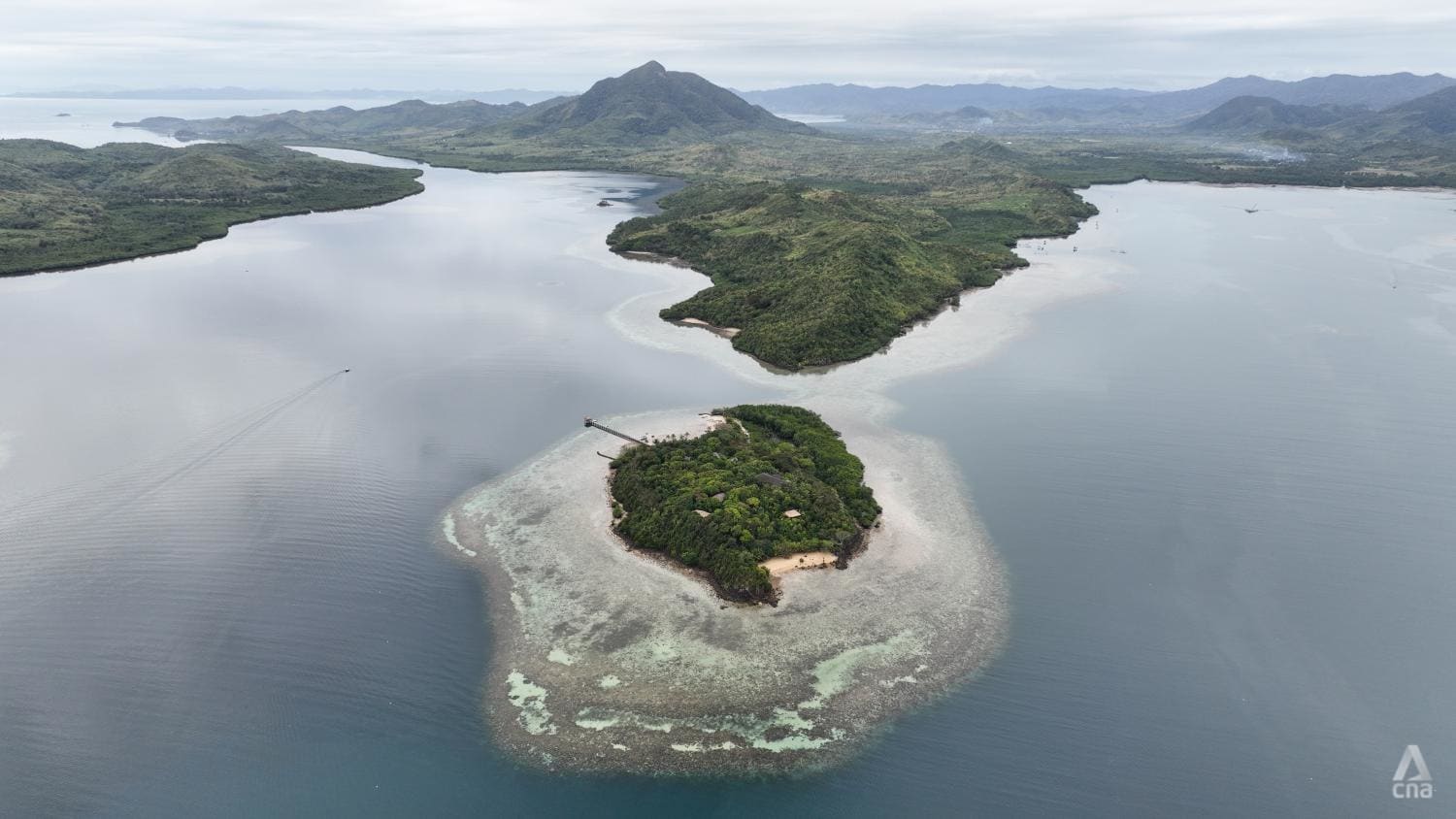
Amid rising climate impacts, the Sulubaai foundation is trying to bridge the gap between traditional knowledge and scientific research and equip locals in vulnerable island communities with the tools they need to adapt to a fast-changing planet.
The foundation has already helped establish four MPAs in the local region of Shark Fin Bay. Its co-founder and president, Frédéric Tardieu, has ambitions to create 10 MPAs by 2025.
The interventions are small but necessary and scalable, Tardieu says. At night, he watches the horizon crowded with lights “like a city” from international fishing trawlers decimating Palawan’s fish stocks. Locals are facing a bleak future, without help.
“At the beginning when we realised the situation, we were really angry. The human is a machine. The human has the power to destroy one hectare in one second. But humans also have the power to help nature and the result is incredible,” he said.
“I think Palawan is one of the last wild parts of the world. My dream is to contribute to the preservation of this part of the Philippines.”
Sulubaai’s base, a private, rehabilitated island - Pangatalan - has become an incubator for new science and innovative ocean researchers. Education is a central mission too.
Multiple projects run simultaneously - artificial reefs have been installed and are monitored to speed up coral reef recovery times, state-of-art photogrammetry creates three-dimensional maps of the reef landscape and bio-acoustic technology lets researchers better understand the complexity of reef sounds.
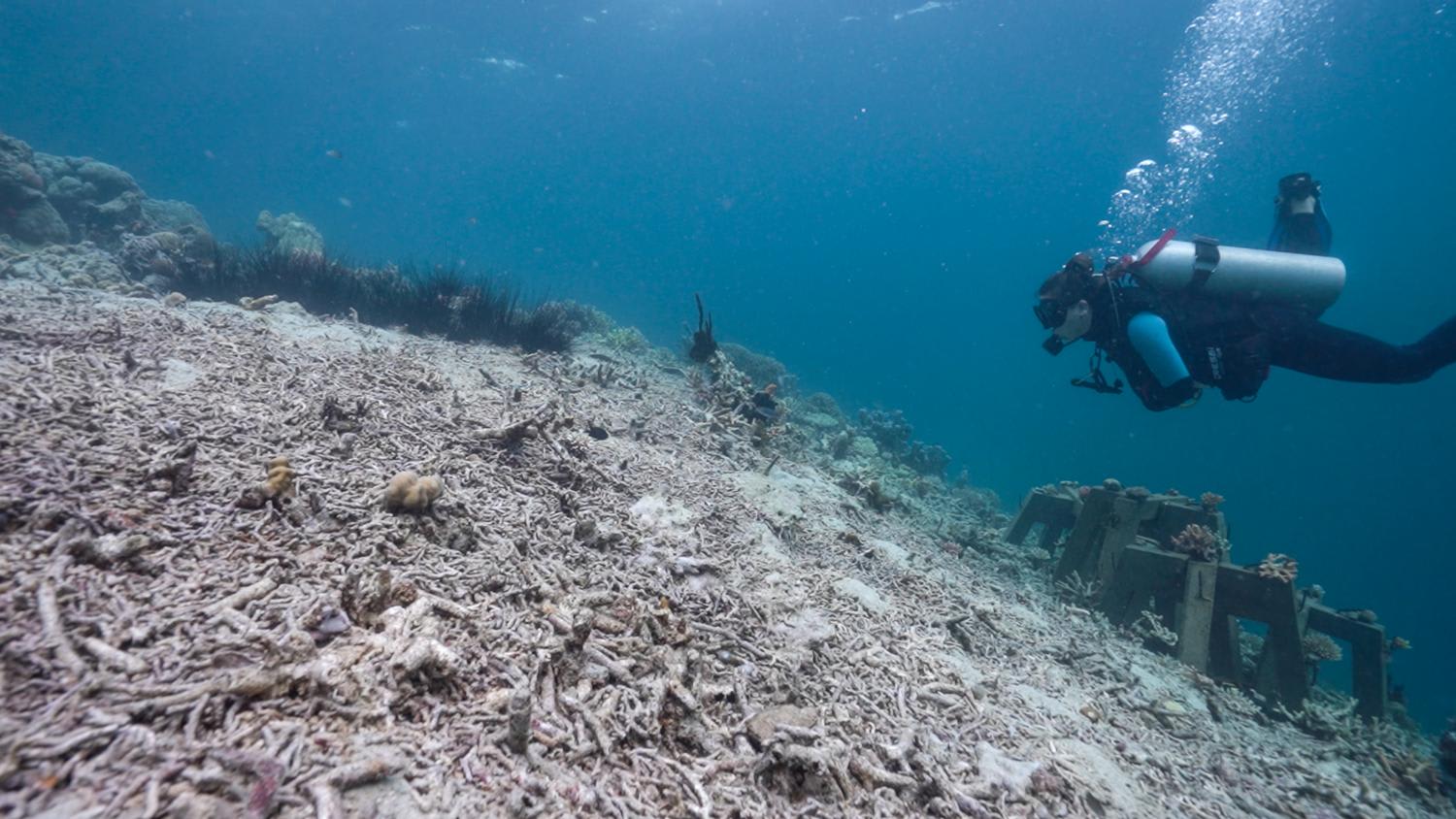
“Pangatalan is a part of science and we give this information to the rest of the world,” Tardieu said.
“We’ve taken the sea temperature every day for eight years. The waves are getting stronger. The beach washes out every year. The temperature is rising. And I'm afraid about this situation. But I can only use the power in my hands.
"We are a sentinel for the rest of the continent. If all the islands in the world give some information, we are preventing bigger impacts.”
Experts agree that the outlook for corals around the world is bleak. The Coral Triangle region within decades may not resemble even how it looks today, let alone the past.
Marine protected areas may need to scale up massively, all while juggling the livelihoods of island communities.
In places like Apo and Pangatalan, the blueprint for adapting to an uncertain future is already being forged.
Additional reporting by Aiah Fernandez.














